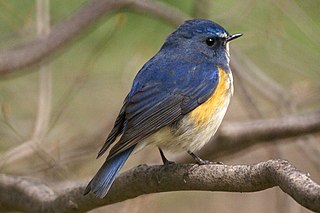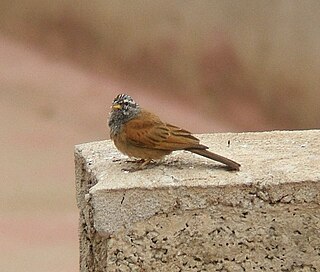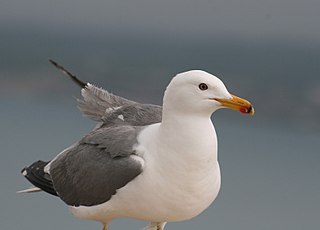Hadoram Shirihai (born in Israel 1962) is an Israeli ornithologist and writer.
Hadoram Shirihai (born in Israel 1962) is an Israeli ornithologist and writer.
Shirihai is the son of Batia and Eli Shirihai. His mother was a schoolteacher, his father was a zoologist in Israel. He grew up in Jerusalem where he became fascinated with birds when he was 13 and spent much time documenting shorebird behaviour, raptor breeding biology and participating in bird migration surveys. In the 1980s and 1990s, he lived in Eilat on Israel's Red Sea coast, where he founded the International Birdwatching Center, becoming its first director.
Shirihai was behind the discovery of several new species in the Western Palearctic and Israel. He guided birding trips into the southern Negev desert, showing many observers locally breeding Hume's tawny owl and Nubian nightjar among other little-watched species of the area. He has written a number of bird identification papers, mostly published in English in magazines such as British Birds and Birding World . With David Christie, he co-wrote the Macmillan Birder's Guide to European and Middle Eastern birds among several other works.
Shirihai is a consummate birder, having added 50 previously undocumented new bird species to the List of birds of Israel, and 10 new species to the Western Palearctic list of birds. [1]
In January 2015, a newly described owl species, Strix hadorami , was named after Shirihai by Dr. Manuel Schweizer and colleagues. [2]
He is the author of The Birds of Israel and co-author of a definitive work on the genus Sylvia . He serves as an editorial consultant to leading bird magazines in Europe such as Dutch Birding and Birdwatch.
Hadoram's main sphere of interest was the complex geographical variation shown by birds breeding in and migrating through the Middle East. He extended his research to Europe, northeast Africa and Asia, publishing The Photographic Handbook for Western Palearctic Birds (Shirihai & Svensson) and The Handbook for Geographical Variation of Palearctic Birds (Roselaar & Shirihai).
In the mid-1990s, Shirihai turned his attention to oceanic birds and marine mammals, particularly those of the Southern Hemisphere. He published The Complete Guide to Antarctic Wildlife, and commenced a 10-year project to produce the Photographic Handbook of Birds of the World.
Shirihai has visited almost every subantarctic island and the breeding grounds of all forms of albatrosses, with special interest in plumage variation and identification. In 2008, he confirmed the continuing existence of the mysterious Beck's petrel (Pseudobulweria becki), known until then from 2 specimens collected in the 1920s and a handful of tentative sight records. [3]

The red-flanked bluetail, also known as the orange-flanked bush-robin, is a small passerine bird that was formerly classed as a member of the thrush family Turdidae, but is now more generally considered to be an Old World flycatcher, Muscicapidae. It, and related species, are often called chats.

Tree warblers are medium-sized warblers in the marsh- and tree-warbler family Acrocephalidae. They are found in Europe, Africa and western Asia. Until recently, they were all classified in the single genus Hippolais.

Zino's petrel or the freira, is a species of small seabird in the gadfly petrel genus, endemic to the island of Madeira. This long-winged petrel has a grey back and wings, with a dark "W" marking across the wings, and a grey upper tail. The undersides of the wings are blackish apart from a triangle of white at the front edge near the body, and the belly is white with grey flanks. It is very similar in appearance to the slightly larger Fea's petrel, and separating these two Macaronesian species at sea is very challenging. It was formerly considered to be a subspecies of the soft-plumaged petrel, P. mollis, but they are not closely related, and Zino's was raised to the status of a species because of differences in morphology, calls, breeding behaviour and mitochondrial DNA. It is Europe's most endangered seabird, with breeding areas restricted to a few ledges high in the central mountains of Madeira.

The long-legged buzzard is a bird of prey found widely in several parts of Eurasia and in North Africa. This species ranges from Southeastern Europe down to East Africa to the northern part of the Indian subcontinent. The long-legged buzzard is a member of the genus Buteo, being one of the larger species therein. Despite being relatively powerful, it is considered a rather sluggish raptor overall. Like most buzzards, it prefers small mammals such as rodents, including gerbils, ground squirrels, voles and rats, also taking reptiles, birds and insects as well as carrion. Adaptable to a variety of habitats, long-legged buzzards may nest on a variety of surfaces, including rocks, cliffs and trees. it is a typical buzzard in its reproductive biology. The long-legged buzzard is widely distributed and appears to be quite stable in population. Therefore, it is considered as Least Concern by the IUCN.

The house bunting is a passerine bird in the bunting family Emberizidae.

The Christmas shearwater or ʻaoʻū is a medium-sized shearwater of the tropical Central Pacific. It is a poorly known species due to its remote nesting habits, and it has not been extensively studied at sea either.

The desert owl or desert tawny owl, formerly known as Hume's owl, is a species of owl. It is closely related to the more widespread tawny owl and to the range-restricted Omani owl.
Beck's petrel is a small species of petrel. Its specific epithet commemorates American ornithologist Rollo Beck. It is believed to nest on small islands with tall mountains around Melanesia. Described in 1928, and long known from only two specimens, sightings and collections in the 2000s confirmed the birds still existed, but are considered critically endangered by the IUCN.

The Armenian gull is a large gull found in the Caucasus and the Middle East. It was formerly classified as a subspecies of the European herring gull, but is now generally considered to be a separate species, although BirdLife International lumps it with the yellow-legged gull.

The Auckland shag or Auckland Islands shag is a species of cormorant from New Zealand. The species is endemic to the Auckland Islands archipelago. It is a sedentary bird that primarily eats various crustaceans and fish. In recent years, roughly 1,000 pairs have been recorded. The Auckland shag is a colonial nester, building sizeable nests of, among other items, grass, twigs and seaweed. The Auckland shag lays three pale blue-green eggs in November–February. The incubation period is 26–32 days.

Dunn's lark is a small passerine bird of the lark family. It is a desert bird which is found across parts of the Sahara from Mauritania to central Sudan.

Salisbury Plain is a broad coastal plain found with the Bay of Isles on the north coast of South Georgia. It lies between the mouths of Grace and Lucas glaciers on the southern coast of the bay, with Mount Ashley south of it. Best known as the breeding site for as many as 60,000 King penguins, its beaches are also covered with many Southern elephant seals and Antarctic fur seals.

The striolated bunting is a passerine bird in the bunting family Emberizidae, a group now separated by most modern authors from the finches, Fringillidae.

Menetries's warbler or Ménétries's warbler is a small passerine bird of Southwest Asia belonging to the genus Curruca. The name of the species commemorates Édouard Ménétries, the French zoologist who described the species in 1832. It is closely related to the Sardinian warbler of the Mediterranean basin and is similar to it in appearance.

The red-tailed wheatear, also known as the rusty-tailed wheatear, Persian wheatear or Afghan wheatear, is a small passerine bird breeding in mountainous areas of south-west and central Asia. It belongs to the wheatear genus Oenanthe which was formerly placed in the thrush family Turdidae but is now in the Old World flycatcher family Muscicapidae. The red-tailed wheatear used to be considered a subspecies of the Kurdish wheatear but is now often regarded as a separate species.

Society for the Protection of Nature in Israel, or SPNI, is an Israeli non-profit environmental organization working to preserve plants, animals, and natural environments that represent bio-diversity, by protecting the lands and waters needed for their survival, and is Israel's oldest and largest conservation organization.

The birds of Cornwall are in general a selection of those found in the whole of the British Isles, though Cornwall's position at the extreme south-west of Great Britain results in many occasional migrants. The nightingale is one English bird which is virtually absent from Cornwall.

The tawny owl, also called the brown owl, is commonly found in woodlands across Europe to western Siberia, and has seven recognized subspecies. It is a stocky, medium-sized owl, whose underparts are pale with dark streaks, and whose upper body may be either brown or grey. The tawny owl typically makes its nest in a tree hole where it can protect its eggs and young against potential predators. It is non-migratory and highly territorial: as a result, when young birds grow up and leave the parental nest, if they cannot find a vacant territory to claim as their own, they will often starve.
The Desertas petrel is a small seabird in the gadfly petrel genus which breeds on Bugio Island in the Desertas off Madeira. The gadfly petrels in the genus Pterodroma are seabirds of temperate and tropical oceans. Many are little-known, and their often similar appearance have caused the taxonomy of the group to be rather fluid. Although the systematics on this species has not yet been definitively established, provisionally some authorities have split the Desertas petrel, separating the Desertas breeding birds from those in the Cape Verde archipelago, while others consider it a subspecies of the Fea's petrel. The species is named after its breeding grounds, which are pronounced "Dez-ERT-ass".

The species was first described by Linnaeus in his Systema naturae in 1758 under its current scientific name. The binomial derives from Greek strix "owl" and Italian allocco, "tawny owl". Some early descriptions upon review were found to have somehow conflated the very different barn owl with the scientific name Strix aluco, which in turn engendered some confusion.